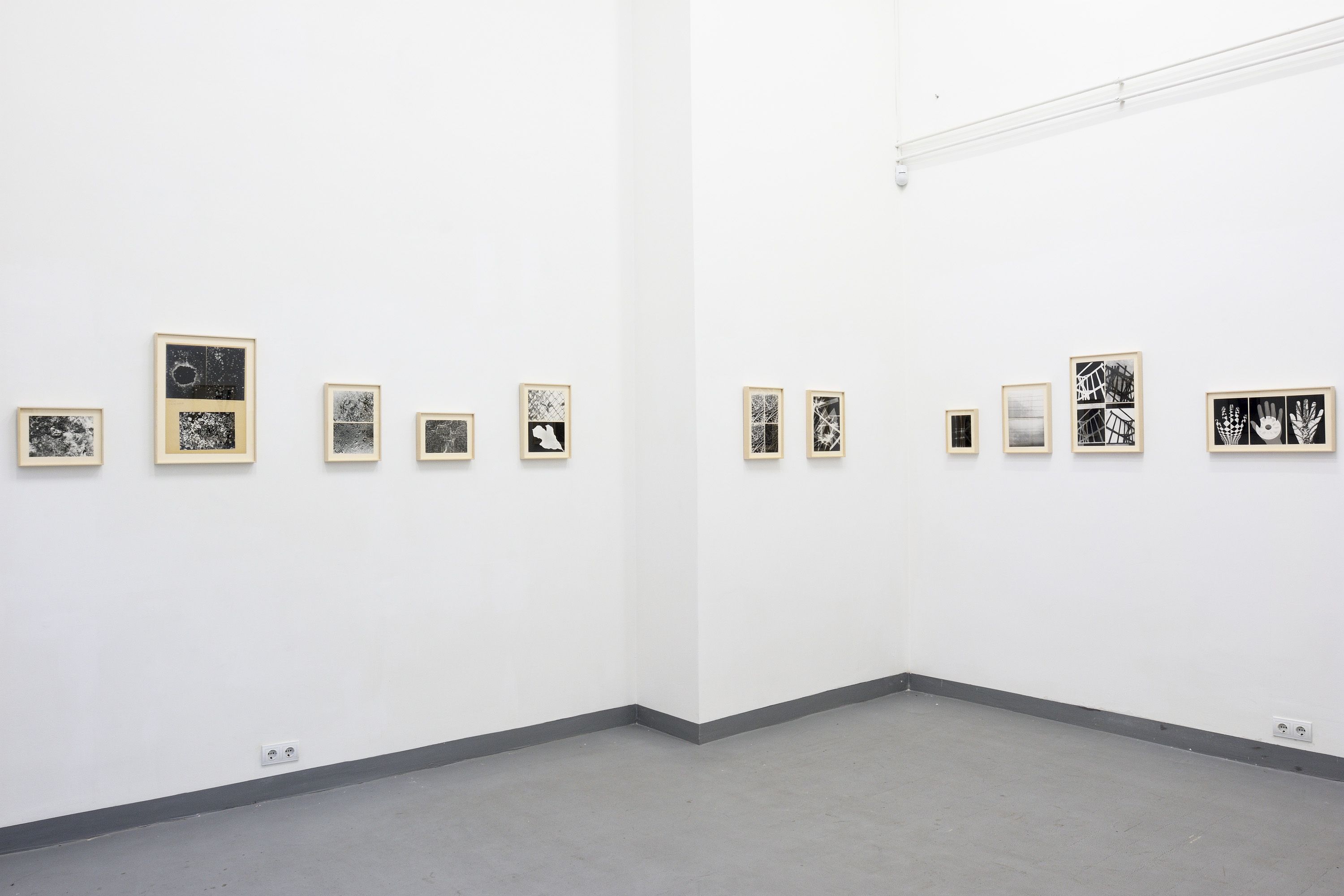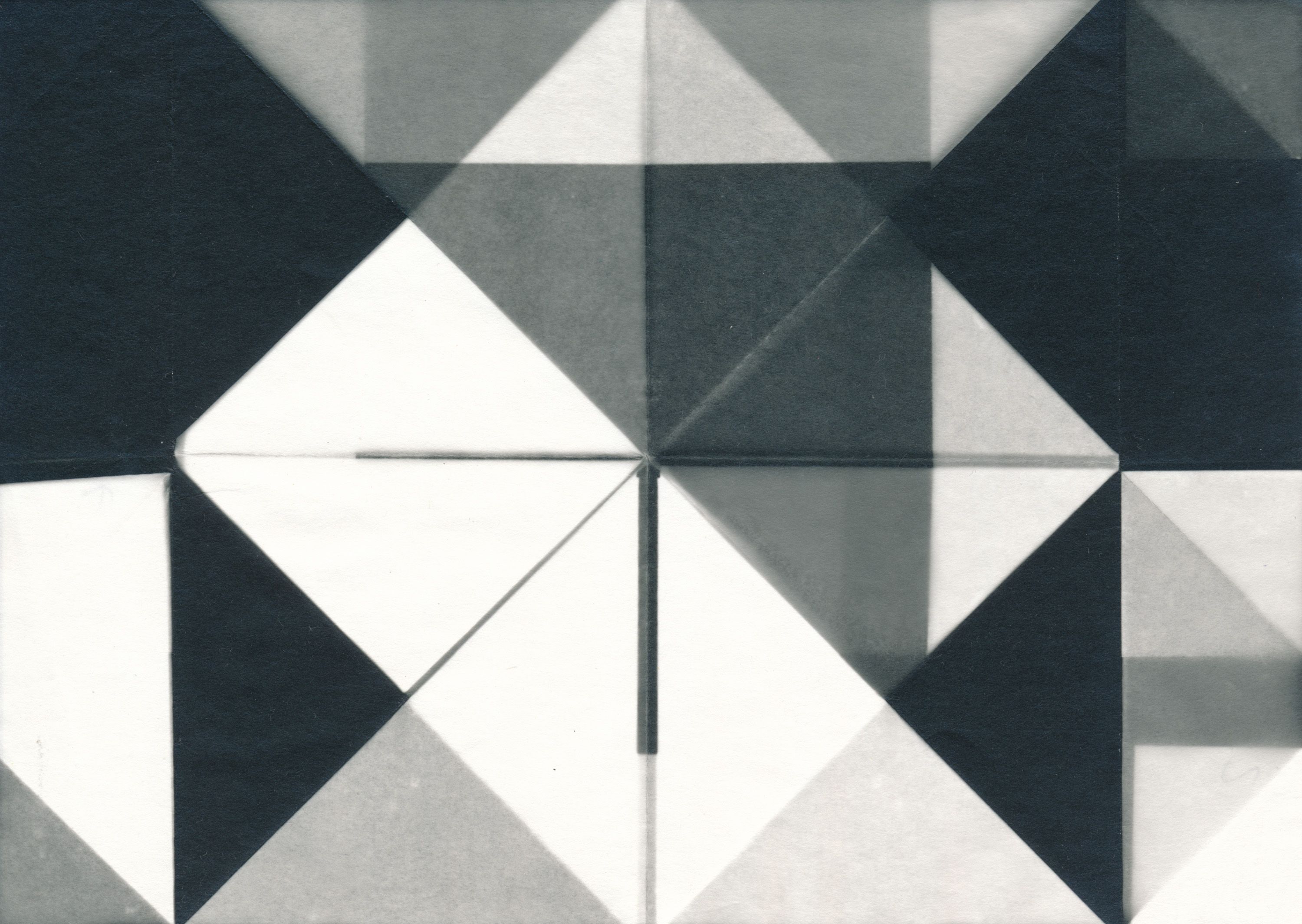Katalin Nádor
The Prose of the World
| Venue: | acb NA |
| Date: | Feb 15 – Mar 29, 2019 |
Description
Katalin Nádor (1938-2018) was known for decades as the photographer of the Janus Pannonius Museum in Pécs where she worked documenting artworks. Her name was also associated with the documentation of performances and exhibitions realized by the Pécs Workshop. The independent, experimental, lyrical abstract photographical work she had simultaneously developed in the course of the sixties and seventies did not receive any professional attention, albeit rooted in the visual heritage of György Kepes’ and László Moholy-Nagy’s photography, and reflecting on the contemporary, new constructivist, geometric artistic endeavours of the Pécs art scene. Her photograms, graphical still-life analyses reveal a sensitive, singular artistic perspective that examines the aesthetic relation and reciprocity between nature and architecture, landscape and object through the lens of abstract photography.
In her experimental art photography, Katalin Nádor’s own way of expression, aiming to show the unity of the world through its details, derives partly from her profession. Created for the purpose of documentation and archival, her seemingly impersonal museum photographs of archaeological finds, Marcus Aurelius sculptures, butterflies, ethnographical statuettes and works of modern and contemporary art are records of a diversified universe. However, these photographs are not mere reproductions serving to identify objects, but also revealing representations, interpretations that use lights to model their subject and achieve the most sensuous and faithful effect with optimal lighting. The reason Nádor could have solo exhibitions first in Pécs and later at the Dome Room of the National Museum, titled “Plastic Art of Millennia” (1970, 1971), was because her consistently sensitive creative vision was capable of the artistic representation of objects from different historical periods with the openness of the same focused attention and curiosity. Even the dramaturgy of her museum photographs is focused on the reception of the universe of objects and the act of apperception, aimed at the disposition of the perceiving subject rather than the object perceived. Perhaps it is not incidental that Nádor’s art photos are most readily associated with the tendency of Subjektive Fotografie in the German scene of the ‘50s.
Hungarian art history also abounds in the still pulsating traditions and antecedents that were in authentic proximity to Nádor locally –for instance, in the figure of Ferenc Martyn. Notably Ernő Kállai and his theory of bio-romanticism with its structures pervading the universe, which proclaims the correlation of abstract art and the laws connecting the microcosm with the macrocosm. Another link to Kállai is Tihamér Gyarmathy, whose works constituted the strongest inspiration for Nádor (besides László Moholy-Nagy) in her own account. A further source of her universalism can be traced back to her relationship with Ferenc Lantos. In his aesthetic program and pedagogical methodology alike, Lantos was engaged in a consistent quest for the common structures of art and nature. This was a major criterion in the narrative of his own oeuvre (deconstructing natural elements into geometric shapes and rhythms) as well as in his visual pedagogy (acquisition of organicity and artistic formation). He disseminated his views in his series of exhibitions Nature-Vision-Creation and through his publications – of course, the reproductions of artworks in these were made by Katalin Nádor.
“The world is vast as an illusion, yet it can fit on a blossom” – this was the quote by Sándor Weöres Ferenc Lantos used as the motto of his booklet Related Worlds. This poem excerpt might as well be about the thesis of Michel Foucault’s The Prose of the World, a chapter in his book The Order of Things, while also alluding to the basic character of Katalin Nádor’s photographic art. In his aforementioned text, Foucault analyses the scientific thought of the 16th century, explicating how it perceives and interprets the universe, animals, plants, humans and stars via analogies, through their similitudes and resemblances. The torment of the human mind is similar to a storm, the plant is an animal with its legs having taken root, the arborescent system of blood vessels in humans is akin to the foliage of a tree, moss grows on rocks like hair on the face. Until the 16th century the details of the world were interpreted in unity – everything was in correlation with, and in magical proximity to, everything else, any point in the infinite universe could refer to any other. The task of the scientist was to read the signs, the hermetic concordances that made similarities and relations obvious, for instance, to figure out that owing to its wrinkles and grooves, which liken it to the human brain, the walnut is a suitable cure for headache. The world is a fractal that mirrors itself. According to Foucault, to the scientist of that age, understanding the world is equivalent to an interpretation that recognizes and infinitely accumulates the hidden correlations of things, nature and theology, in order to map this same world in the similarly infinite expandability of commentaries and interpretations.
As though Katalin Nádor’s works saw the world through the eyes of the premodern scientist: a cascading fall of hair mirrors the foliage of a weeping willow. The plumage of a peacock is like the structure of a dandelion. The texture of a radically contrasty gravel surface can be reproduced in the composition of a microscopic photograph. Shots of salt crystals seem to depict a galaxy. The framework of similarities is often abstraction, dissociation from reality to such extent that it is meant to show the essence, the true image of a thing by displaying its similarity to a photograph of another object, landscape or architectural detail. In other words, things in Katalin Nádor’s photographs retain their identity insofar as they are capable of sharing it with other things. Nádor thus also makes a statement about our vision: she guides our approach to objects towards poetic sensitivity and aptitude – to recognize their true quality beyond our identification of them at first glance. The world we thus receive is an image folding into itself, an infinitely expandable string of interlocking phenomena. Katalin Nádor’s photographs are the prose of the world, conveying contemporary creative attitudes in their variations and the spirit of the Pécs Workshops in traces, evoking great figures of photography, substantiating the most authentic artistic attitude.

